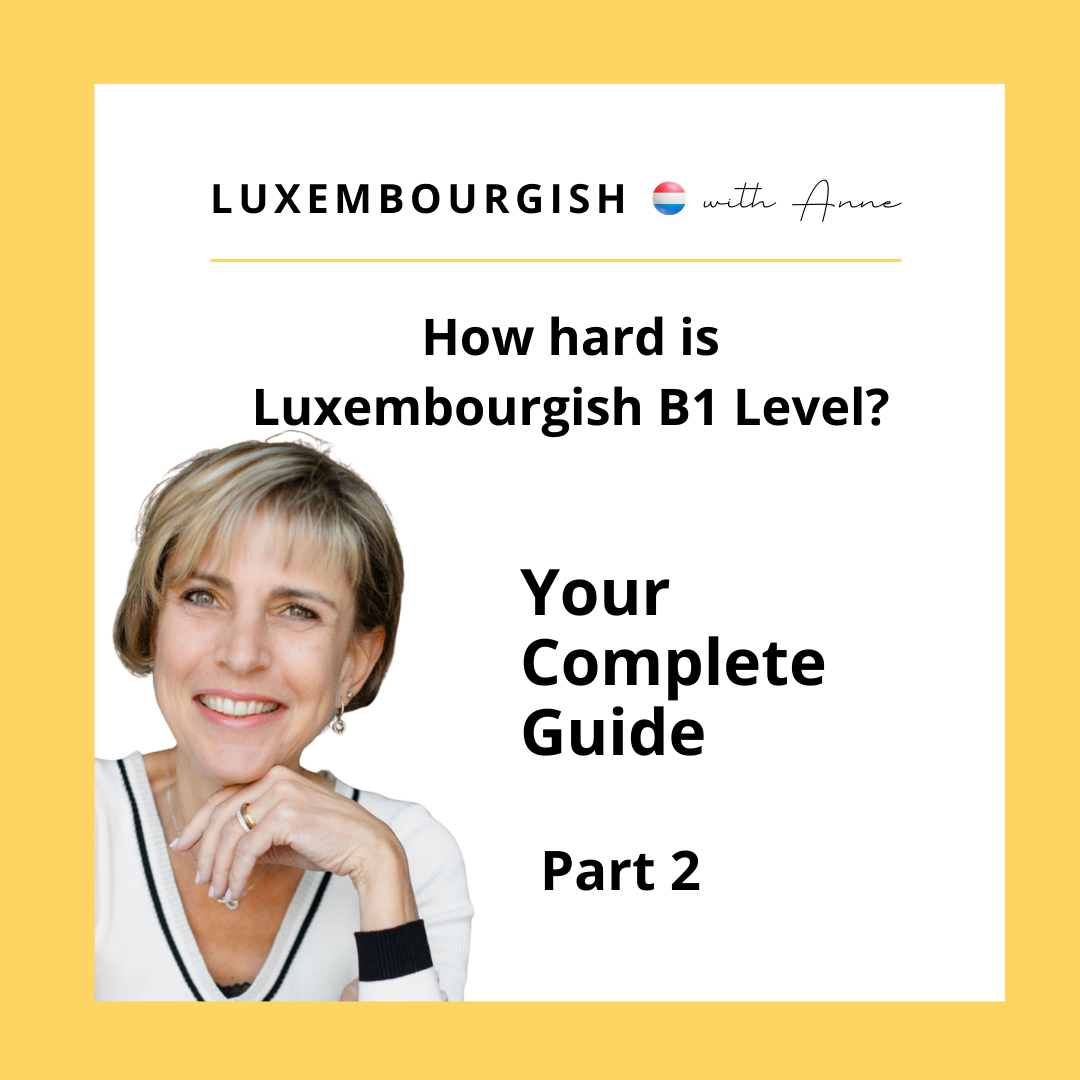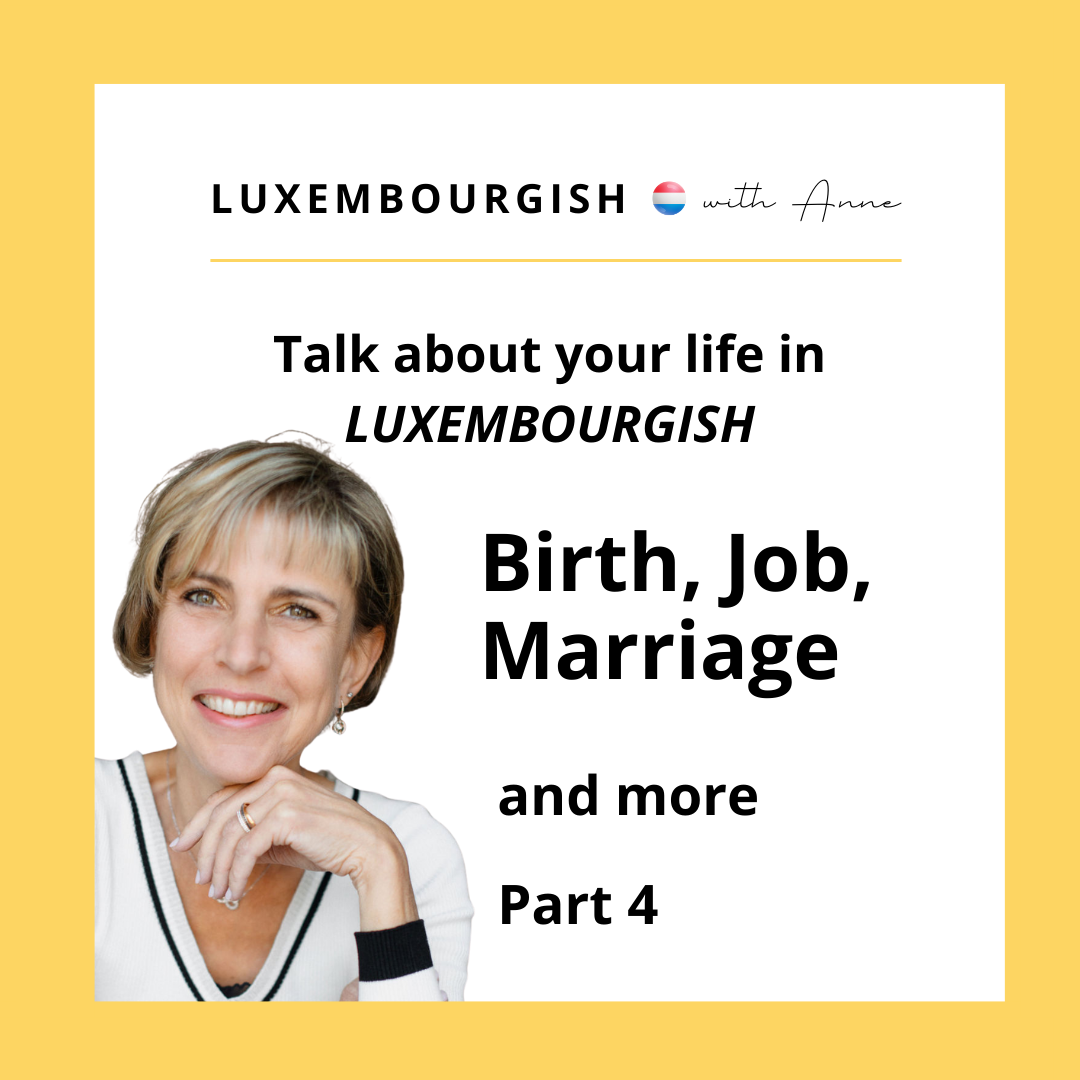This is a very important tense in Luxembourgish because we use it all the time in conversations and as well in written language. And what’s very important to know is that almost ALL Luxembourgish verbs are exclusively used in the perfect tense (at least in spoken Luxembourgish).
So believe me that you will NOT be able to hold even the easiest normal conversation if you don’t know anything about the perfect tense.
In this lesson I will show you how to use regular verbs in the perfect tense and in future lesson I will show you how to use separable verbs and irregular verbs & verbs of movement.
Regular Verbs in the Perfect Tense
The perfect tense in Luxembourgish is very similar to the present perfect in English (but the usage is totally different). For example:
⇒ I have boiled eggs.
We have a helping verb have and a past participle boiled.
In Luxembourgish we also build our perfect with a helping verb and past participle BUT we separate them by putting the past participle at the very end of the sentence.
By the way… if you’re wondering what the past participle is in English: it is the third form of this 3-form verb scheme: take – took – taken
Beispill (example)
⇒ Ech hunn Eeër gekacht. – I have boiled eggs.
We use the helping verb hunn (to have) and we put the past participle gekacht at the end of the sentence. Here we have the verb kachen (to cook, to boil) and this is a regular verb. We have the ending –en and the stem kach– .
The standard rule is simple: remove the en-ending of the verb, add a ge in the beginning and a t at the end:
ge + stem + t
I will call it ge-form from now on because it is just a little more intuitive how is it done in Luxembourgish.
schaffen (to work) ge + schaff + t
wunnen (to live) ge + wunn + t
lauschteren (to listen) ge + lauschter + t
If you want to ask a question you put the helping verb in the first position and the participle still comes at the very end:
Hues du Eeër gekacht? Have you (informal) boiled eggs?
or you can build a question by using a question word such as wat (what) or wéini (when) followed by the helping verb hunn:
Wat hues du gekacht? – What have you (informal) cooked (boiled)?
Let’s practice with the verb laachen (to laugh) and schécken (to send):
Beispiller (examples)
Hien huet vill gelacht. – He (has) laughed a lot.
D’Kanner hunn déi ganzen Zäit gelaacht. – The children laughed the whole time.
Ech hunn dir en Email geschéckt. – I (have) sent you an email.
Wéini hues du de Pak geschéckt? – When have you (informal) sent packet (parcel)?
In Luxembourgish there are many verbs ending in –éieren:
probéieren (to try), reservéieren (to book), telefonéieren (to give a call), studéieren (to study) asw ….
They all* follow this rule :
stem + t
probéieren ⇒ probéier + t
*Exception: léieren (to learn) geléiert
So adding ge in front and t to the end is the default way to construct the ge-form of a verb and this rule applies for a part of all Luxembourgish verbs but there are many exceptions. Of course.
The bad thing is that the irregular forms are the ones you will use most in daily conversation so to you as a beginner it will seem like EVERY verb has an irregular ge-form.
Let’s finish this lesson by mentioning the 2 main deviations of the standard rule:
- Some regular verbs don’t take the ending t in the perfect tense:
liesen (to read) ge + lies
wäschen (to wash) ge + wäsch
2. For some verbs there is a change of the stem-vowel and in some cases in the ending:
schwätzen (to speak) ge + schwat
drénken (to drink) ge + dronk
denken (to think) ge + duech + t
schreiwen (to write) ge + schriww + en
Übung (exercise)
Watch the video so to practice with many many examples – along with me!
If you want to learn Luxembourgish from scratch but you don’t have time to attend classes then this my online course is for you!




